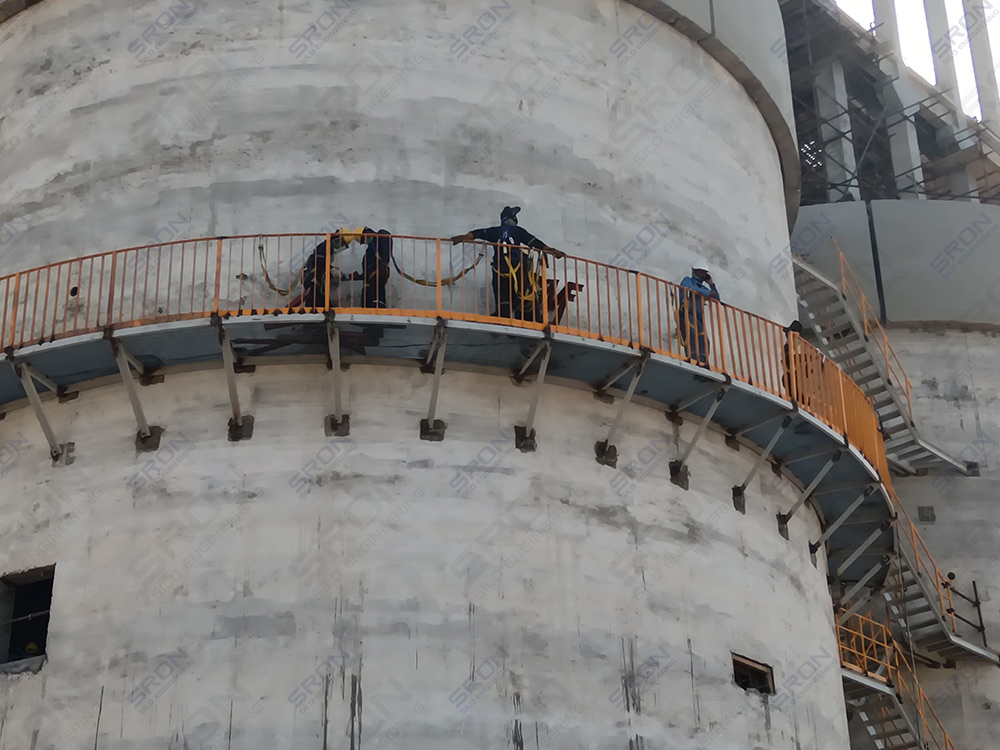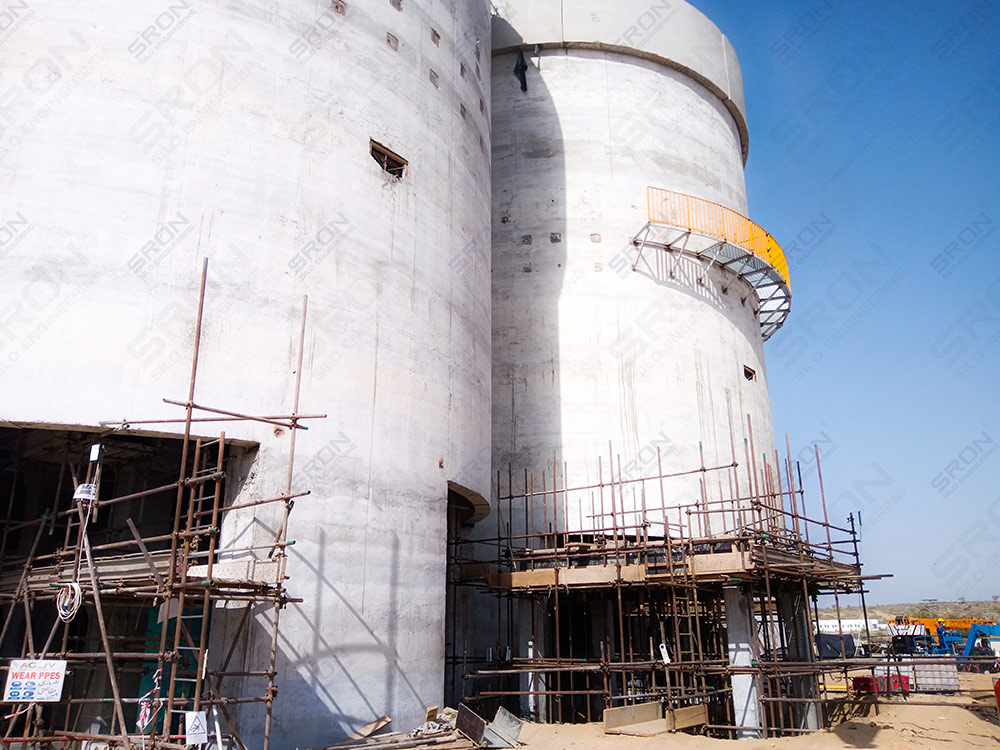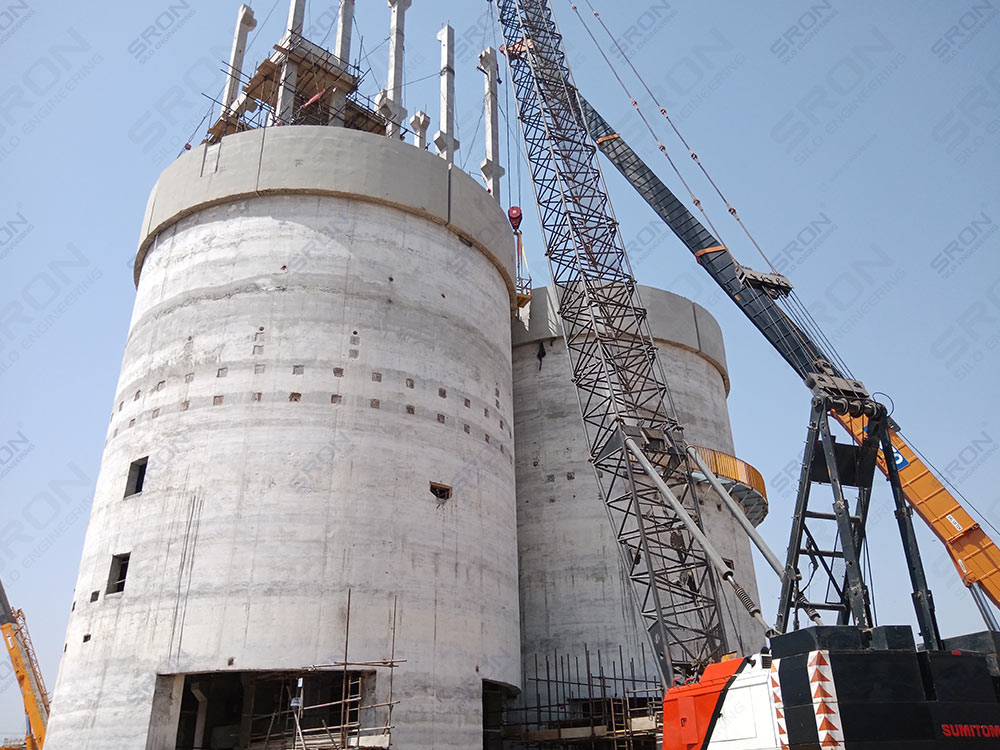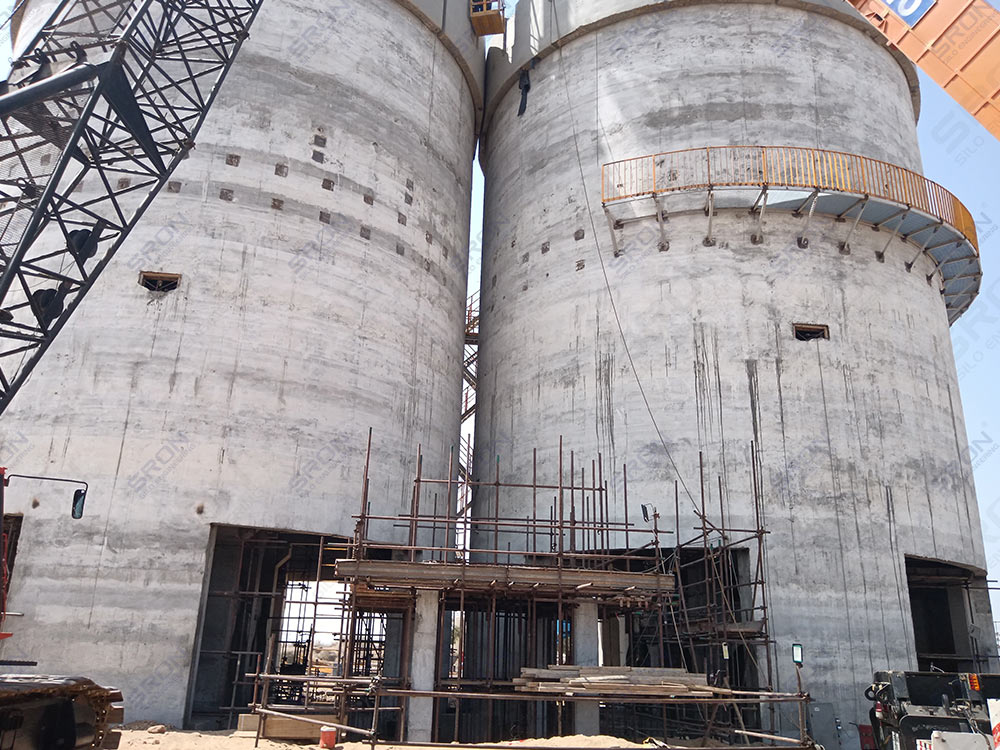During the coal washing process, in order to facilitate storage and transportation, various types of coal storage silos need to be built, including raw coal silos, clean coal silos, etc. In recent years, the environmental protection pressure on coal preparation plants has increased day by day. In the new development environment, large-diameter coal storage silos can not only significantly increase the capacity of coal storage silos, but also have the advantages of good structural integrity, long application time, and low maintenance. This plays an important role in promoting the development of coal preparation plants.
Concrete Silo Introduction
Coal silos are silos used to store coal in industrial buildings such as cement, steel, and electricity. The concrete silo is a deep silo with a diameter of up to 25m and a simple silo capacity of 20,000 m3. It adopts a structural form supported by reinforced concrete walls and internal columns. The bottom of this silo is flat, because the structure of the flat bottom with filler has reasonable stress, clear load transmission, simple structure, and convenient construction. The rest are designed according to the natural and geological data of the owner's coal preparation plant.
Features of Concrete Coal Silo
1. Durable and long service life, generally more than 50 years;
2. Small footprint and high land utilization rate;
3. The silo has thick walls and good thermal insulation performance. The materials are less affected by external temperature differences and are suitable for long-term storage;
4. It is well grounded and should not accumulate static electricity, so it is safe and reliable.
5. Most bulk materials can flow into the vehicle by their own weight, reducing equipment losses and saving power costs;
6. Convenient for mechanized loading and unloading, saving manpower and management costs;
7. Less maintenance and low maintenance cost.
Structural Modeling and Optimization of Concrete Silos
Since the reinforced concrete silo is an integral cast-in-place structure, all structural components should be coupled during modeling to ensure coordinated deformation. This requires us to comprehensively consider factors such as the position of beams and columns, the size and location of door and window openings before building the model, so as to ensure that the unit grid is divided neatly and consistently. Under the condition of ensuring that the force model is correct, the local area can be appropriately simplified, which not only saves a lot of modeling trouble, but also avoids abnormal local operation results.

Precautions When Designing and Constructing Concrete Coal Silos
1.Unreasonable design of coal storage silos may bring the risk of explosion, and the airtightness of coal storage silos should be maintained during design. When designing, it is generally advisable to use multiple explosion-proof valves evenly distributed on the top of the silo. There should be no human activity areas or key process equipment on the explosion-relief transmission path, and the explosion load should not cause damage to structures outside the silo.
2. The coal storage silo construction quality acceptance standards should be formulated, and installation should be carried out according to the manufacturer's installation instructions. At the same time, the explosion vent device should be installed at a certain angle to avoid the entry of water and debris, and pay attention to the opening direction of the explosion-proof valve. The installation process should ensure that the explosion-proof valve is not damaged, is lubricated and operates freely. There should be no accumulation on the inner surface of the explosion-proof valve or between its layers, and the locking device of the explosion-proof valve is in place and operable. After completing the construction of the coal storage silo, an air tightness test must be carried out to ensure the tightness of the coal silo.

3. A dust collector should be installed on the top of the silo, and devices for measuring temperature, combustible gas, dust concentration and coal level should be installed in the coal silo.
4. Standardize the regular inspection system and organize training and drills for relevant personnel. Ensure that production equipment, fire protection and other safety protection facilities are in good condition, and if abnormal parameters are found, they should be dealt with in a timely manner. The explosion relief device should be inspected and maintained regularly to ensure its sealing and that there is no obstruction to the explosion-proof valve opening.




